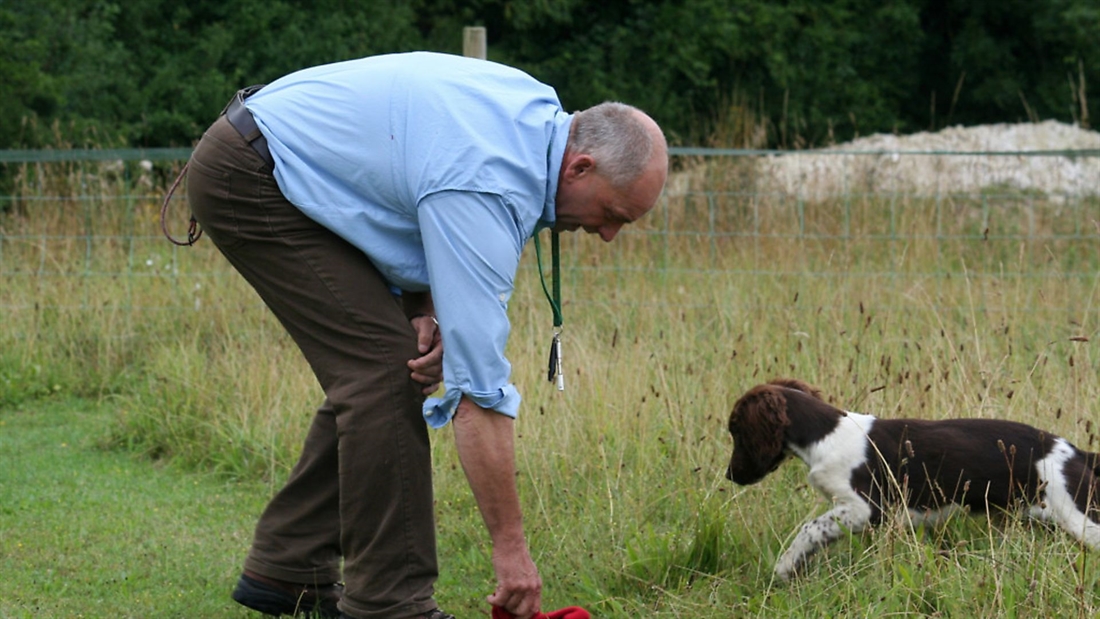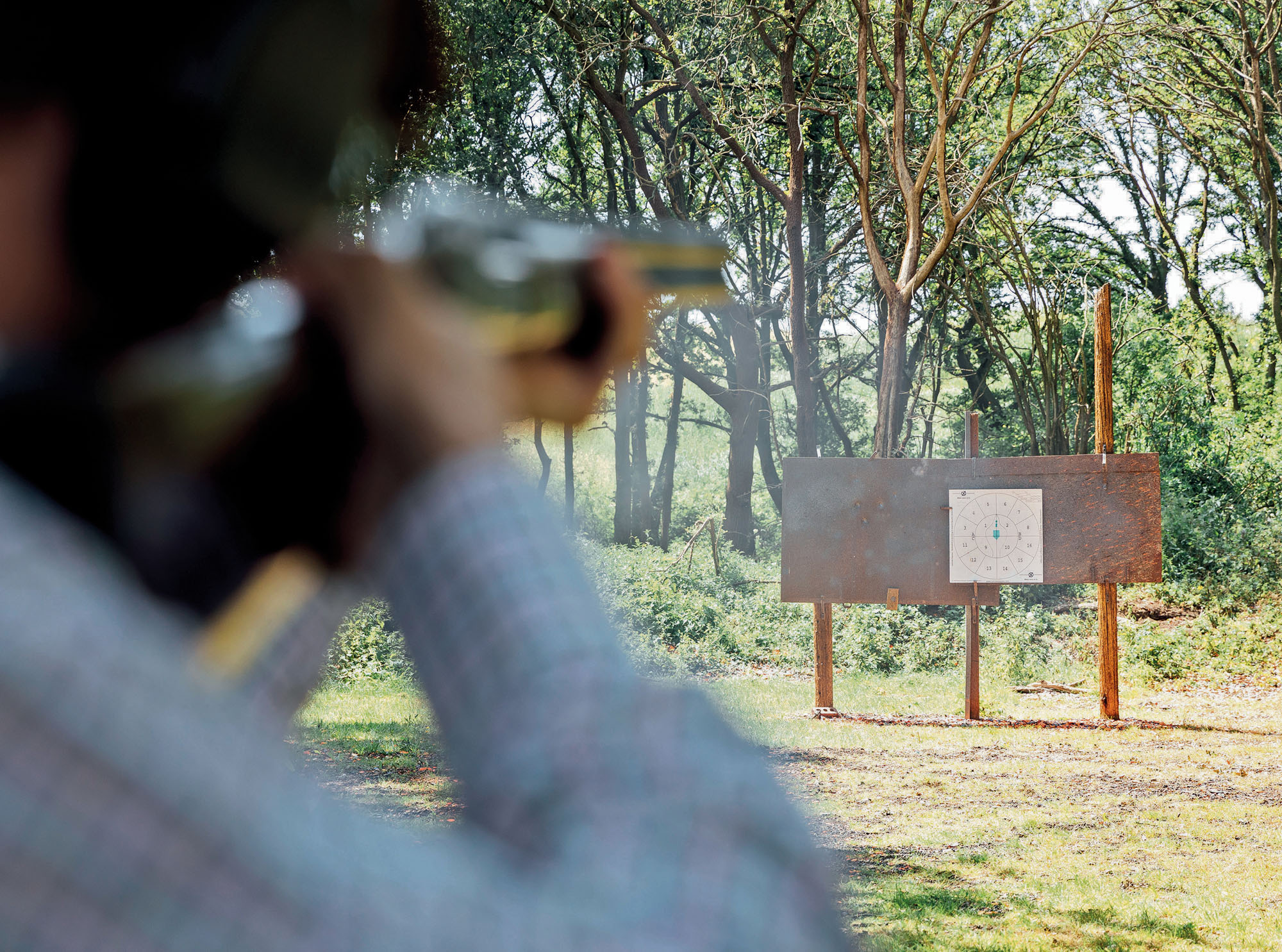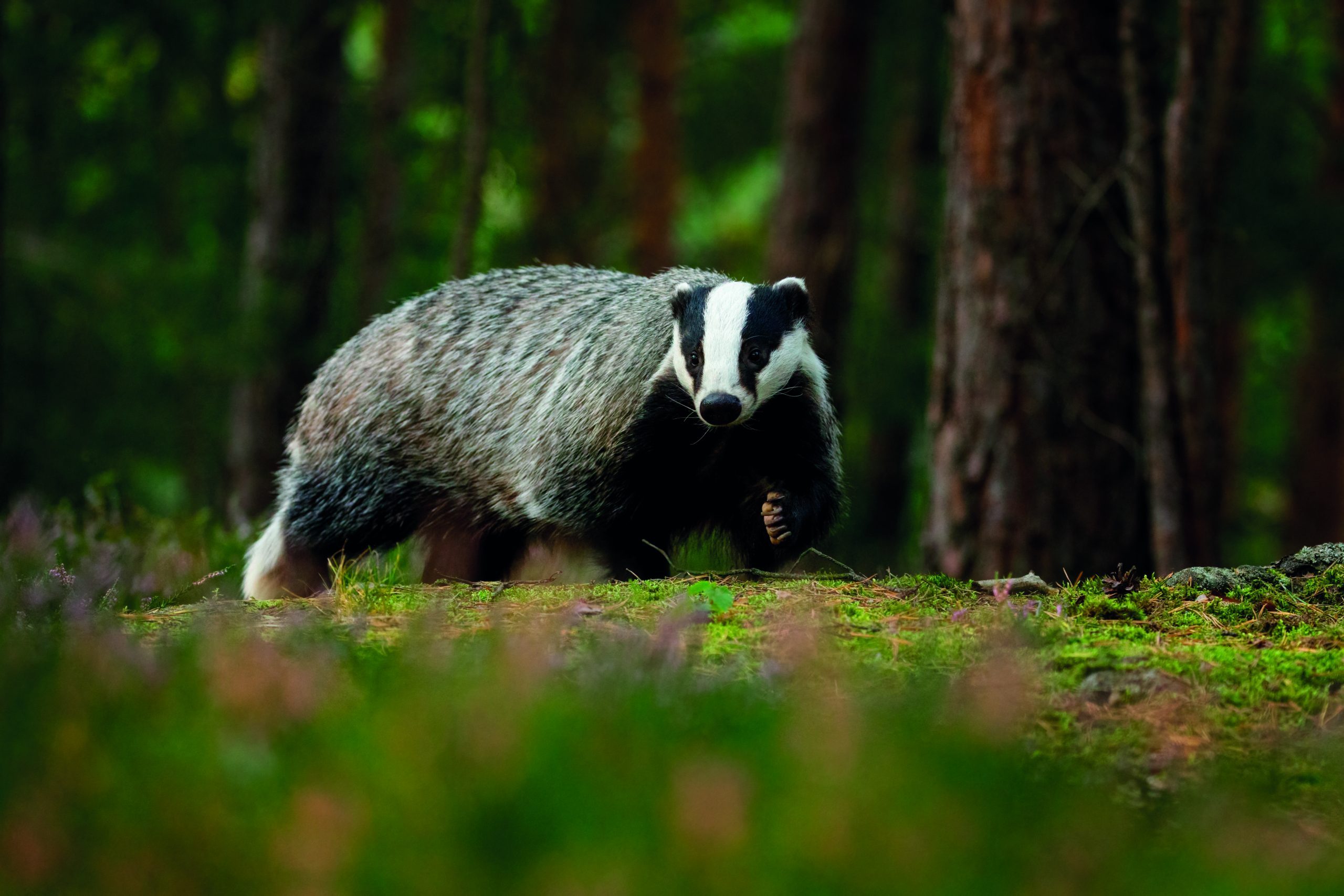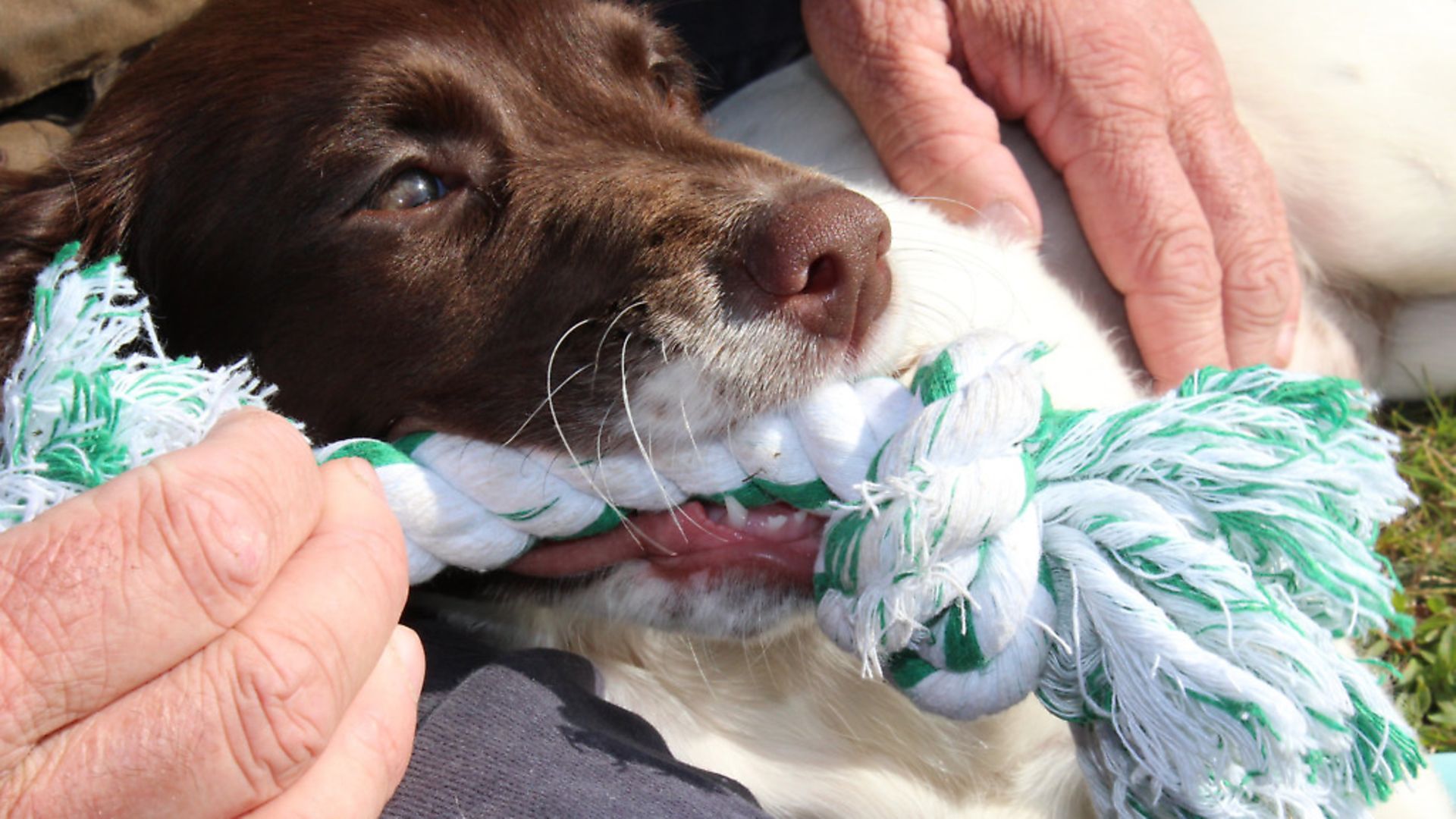Training to build the retrieve with your young gundog

Once your gundog puppy has mastered the basic retrieve, it’s time to build up to training blind retrieves and memory retrieves…
Here in the UK we can almost take it for granted that the working springers, cockers and retriever lines that we chose our working stock from will be natural retrievers. By that I mean that at eight weeks, if you sit on the floor and gently ‘bait’ the puppy with a knotted handkerchief and then throw it a few metres, the pup will retrieve it, bringing it back to your lap.
We can’t open an article with those comments without indulging in a bit of patriotism and reminding ourselves that hunters come from all over the world to get their hands on our healthy, beautifully bred, energetic, athletic, hard-hunting, hard-retrieving, soft-mouthed, easily trainable British gundogs. Be proud boys and girls; be very proud! At the risk of sounding a little patronising, let’s make sure that we stick together and support each other. Where there are problems, let’s try not to be nasty to each other. With the right approach, we can all have our various likes, opinions and ideas but, importantly, stay united!
In our Sporting Gundog section, we have produced a series of puppy development articles that might give you some ideas to assist with the training of your gundog puppy. Initially, this was basic training – come, sit, watch, finish, heel – then last time we sat ourselves down in the ‘special retrieving chair’ and looked at how to build a nice retrieve and delivery to hand. Achieving this ‘straight out, straight back’ retrieve is essential before we move forwards.
With the right application, it might be possible to achieve all of the above by the time the puppy is only 12 weeks old. It’s important to remember that this will, of course, be on a miniature scale as you’re working with a tiny puppy. Slowly but surely, we can increase the difficulty of the retrieve. If you opt to start the puppy’s training as early as this, I would encourage you to push to make the retrieving more complex rather than increase the distance too much – we do not want to damage the youngster’s physical development.
There are, of course, different views on how old a puppy should be before you start formal training, but mine is that you have a rapidly developing little brain that is consuming experience and knowledge, and provided you keep things fresh and enjoyable for the youngster then his predatory mind will flourish with this reward-based training.
Initially, we start with a ‘marked retrieve’ and the puppy simply watches the fall of the dummy and uses his eyes to get to it. Next, we can throw the dummy into some cover, short grass or amongst a few scatter cushions if you are training indoors. This means that he has to make some calculations; simply because he can no longer see the dummy he has to make his way to ‘the fall’ and then hunt until the dummy is found. These are skills that you will need to help him develop through success. Keep things simple and gradually build the dog’s confidence to keep hunting until he gets his prize. If you make things too difficult he will be unsuccessful, give up and come away.
It’s been fascinating over the 35 years that I’ve been studying gundogs to watch the hunting instincts and genetics develop. With only a small amount of encouragement some lines, particularly the spaniels, are nothing short of remarkable to watch in their unrelenting pursuit of a dummy. The ability to mark is essential. If we develop the marking ability of the dog then he will be much more efficient in locating a retrieve quickly and efficiently. We need to encourage the puppy to hold the area and use his nose to locate his prize.
Some youngsters, particularly those with a high prey drive, will do a quick flick around the area and if they don’t find the dummy immediately will run around like headless chickens, adopting a strategy that if they cover enough ground they will find their prey. This is something that can become undesirable; we want the dog to hunt a relatively small area to avoid disturbing other game in the surrounding area. The exception being, of course, if the bird turns out to be a runner; in which case we need the dog to learn to take the line (blood trail) and find it.
You can use clearly defined, small areas of cover or corners of fields to help to encourage the puppy to hold an area and keep hunting.
Going in blind
Our overall objective is to train the dog to trust and understand our instructions enough to be able to make blind retrieves. This is a retrieve that the dog has not seen fall and so will rely on the handler to direct it into the area. In a well-trained dog this is fantastic to watch and a really useful asset to have.
The memory retrieve is an excellent technique to develop the youngster’s confidence. Distance to the dummy and the time frame from the fall of the dummy until being sent make the retrieve more difficult. Simply walk the puppy to the area that you want him to make the retrieve from, sit him up and let him watch you throw the dummy into the cover. Now keep him at heel and walk a short distance away before about-turning and sending him. The puppy should race back, confident that he knows where the dummy is. Gradually build the distances on this exercise until the dog is confident to really ‘get out’. I use 200m as my benchmark, but some of the top retriever trainers will need more.
If you use the same area over several training sessions, you will reach a point where you can pre-plant a dummy in the cover. This, of course, is the beginning of our blind retrieve. Once the dummy is in place, bring the dog relatively close to the area, set him up and cast him. Assuming you have built his confidence, he will trust you; in fact, he will be trusting his own instincts, recognising that this area has produced dummies for him before and will simply give it a go. There is still a long way to go before you will be able to ‘line’ him across ground that he has never been on before, but things are now right on track.
Use natural lines, hedgerows, footpaths, tramlines and tracks to direct and guide a young dog. If you’re lucky enough to have your own piece of ground then you can mow retrieving lanes to help encourage a youngster to run straight and true. Be careful not to be lazy when practising retrieving as it’s not uncommon to see dogs that have got into the habit of only going a certain distance before they start hunting. This distance will usually be as far as the owner can throw the dummy so make sure you don’t fall into this trap.
This early and intermediate retrieve training is all about producing a dog that has a fast and confident ‘out run’; a dog that believes that when you set him up and cast him you are someone he should trust to help him get a dummy in his mouth; and who will run in a straight line until he hits scent or you tell him to stop and hunt an area.
To achieve this, you will need to spend quality time on the training field, patiently showing your puppy how to be successful. Get it right and you will have a ‘flying machine’! All we need to be able to do now is control all that power. Watch this space! Have fun and keep training.






